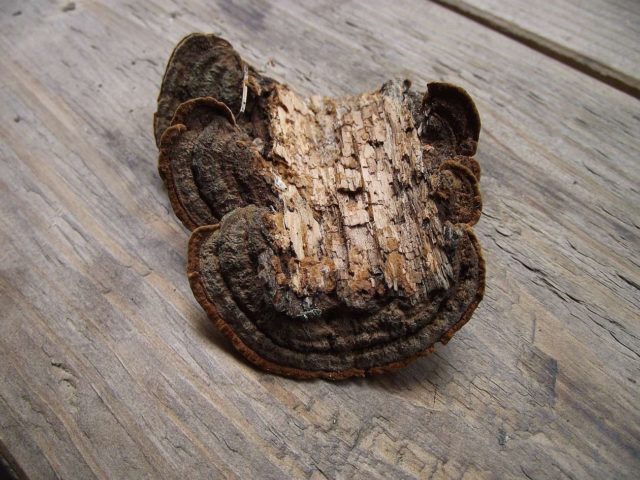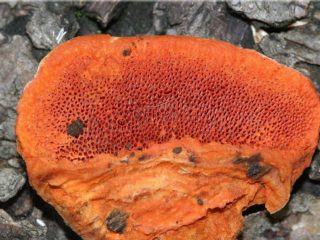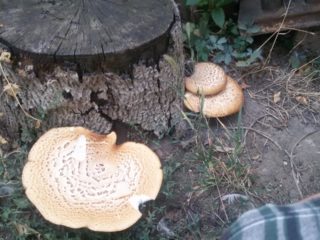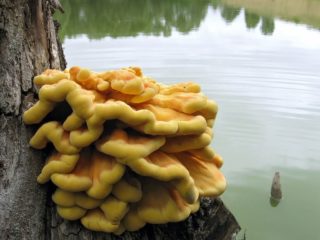Content
Phellinus, belonging to the Hymenochaeta family, is found on all continents except Antarctica. People usually call them tinder fungi. Phellinus black-limited is a perennial representative of this genus.
What does Phellinus blacklimited look like?
This is a prostrate fruiting body. At the beginning of ripening, the specimen resembles a sitting hat, but then gradually grows into the substrate, repeating its shape. The length of the cap reaches 5-10 cm. It is slightly bent from the surface of the tree and has a hoof-shaped shape. Young mushrooms are soft, covered with a felt, velvety skin of a reddish-brown or chocolate color. A distinctive feature of Phellinus black-limited is its ridge-like light edge.

Saprotroph grows into the body of wood
The tissue of the black-limited tinder fungus has two layers, between which there is a black stripe. The pulp is spongy and loose. With age, the parasites become hard and the felt layer disappears. The mushroom becomes bare, covered with moss, and grooves appear on the dark surface.
It consists of tubular hymenophores, on the surface of which grayish translucent spores are visible. The length of each is 5 mm.
Where and how does it grow
The black-limbed polypore prefers coniferous forests and grows on dead trees, in particular, larch, pine, spruce, and fir. It is cosmopolitan and can be seen on remnants of coniferous wood in all parts of the world. Sometimes the mycelium grows into the wooden floors of residential or warehouse buildings, causing white rot and destroying the wood. Phellinus blacklimited is a rare mushroom. It is listed in the Red Book of many European countries.
Is the mushroom edible or not?
The tinder fungus is not edible. There is no information about its toxicity.
Doubles and their differences
Several types can be classified as twins.
The inedible Phellinus grape is distinguished by its elongated shape and smaller dimensions: width - 5 cm, thickness - 1.5 cm. The fabric is single-layered, hard, and has the texture of cork. Settles on pine and spruce wood. The surface of the cap is hard.

2-3 grape fungus grow together to form a tiled surface
Phellinus rusty-brown also settles on the wood of coniferous trees, causing yellow rot. It has a completely prostrate shape. The fruit body is brown with lighter edges. More often found in taiga zones of Siberia. The mushroom is inedible.

Several bodies of Phellinus rusty brown merge into one whole and cover the entire tree
Conclusion
Phellinus blacklimited has many related species. Most of these tinder fungi are perennial and inedible representatives of the forest. In folk medicine in some countries, their medicinal properties are used to some extent.








